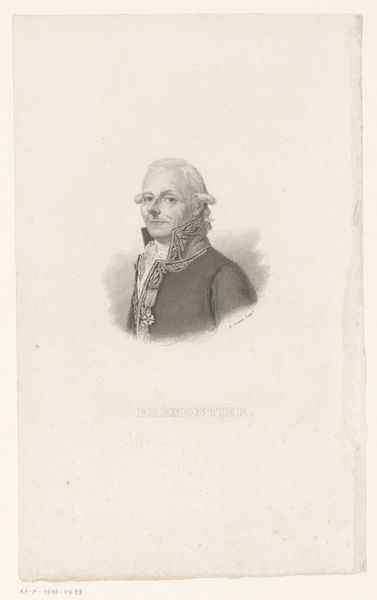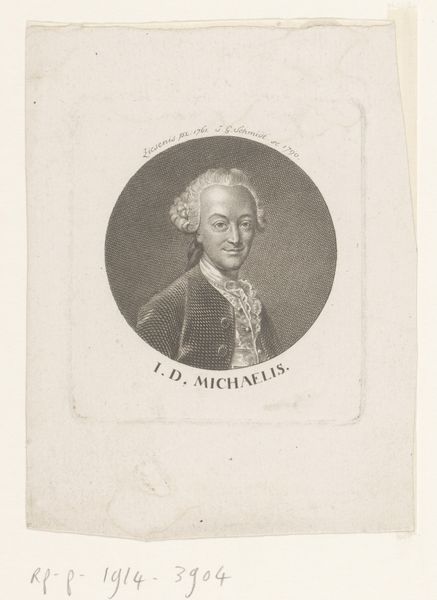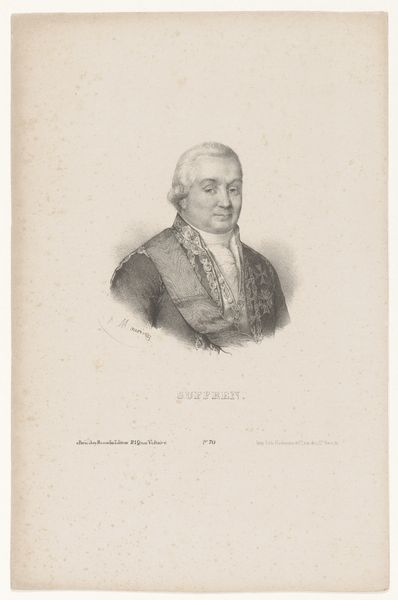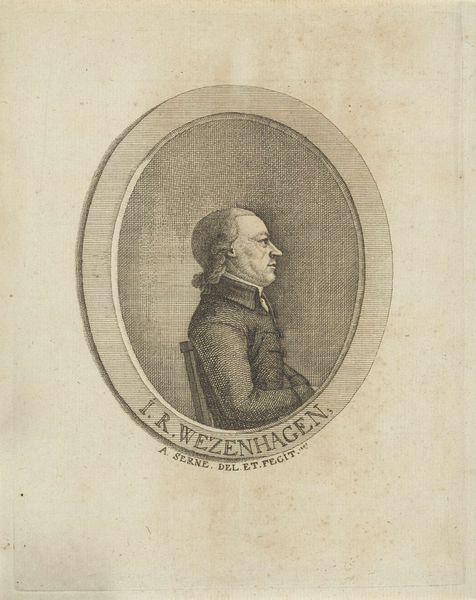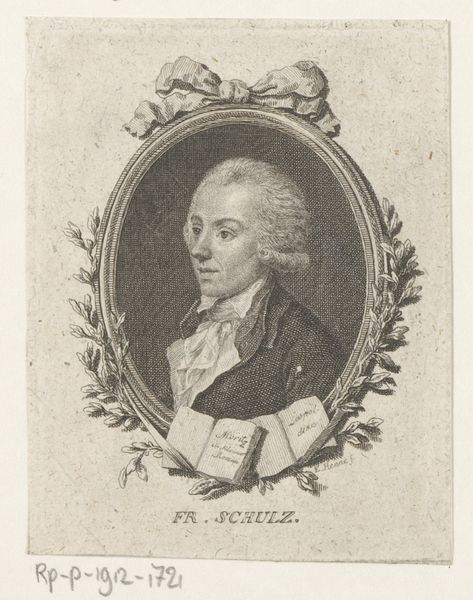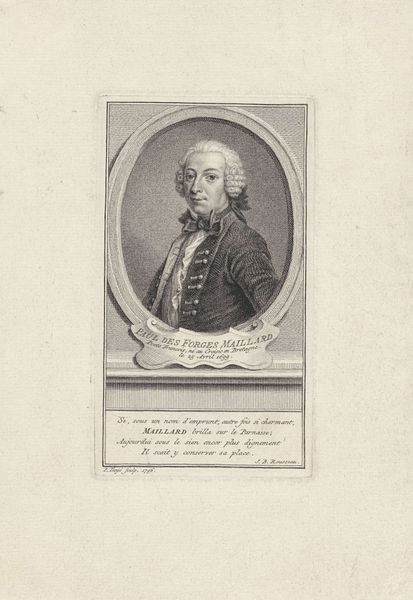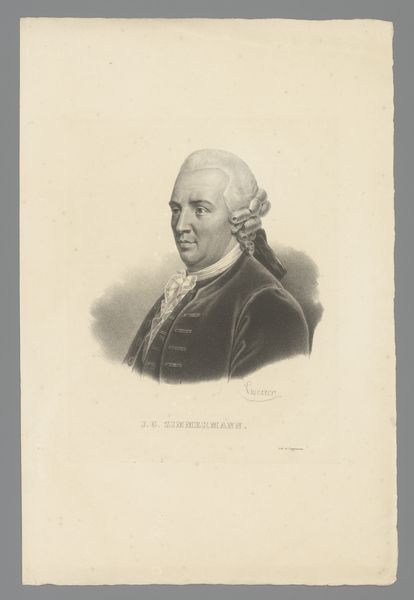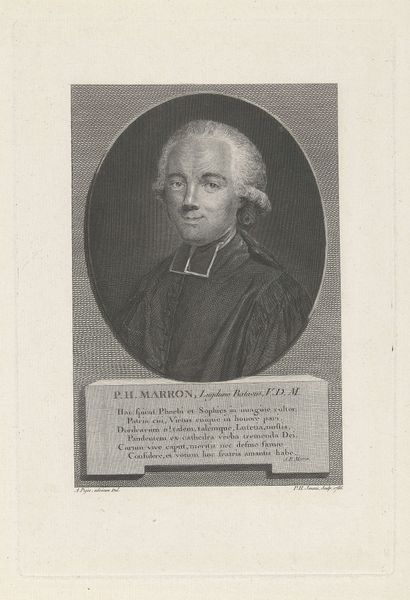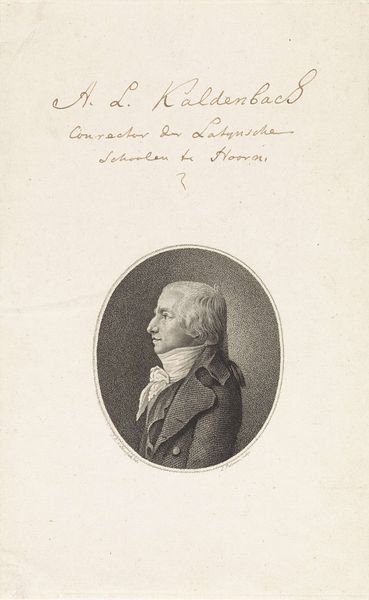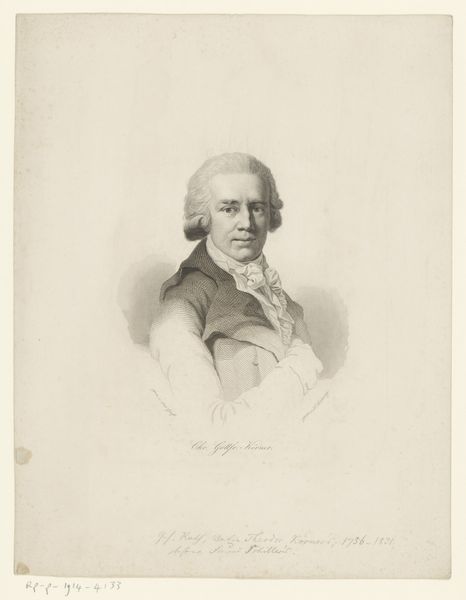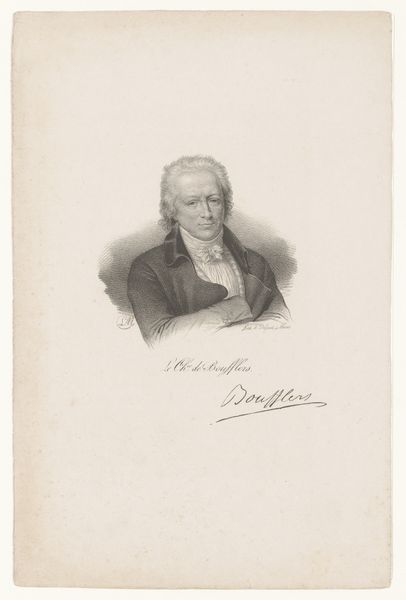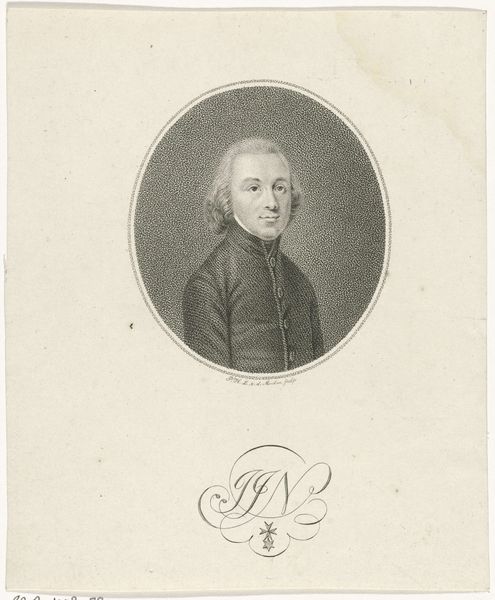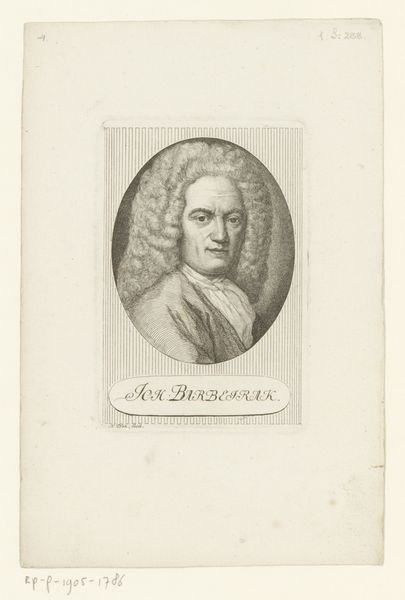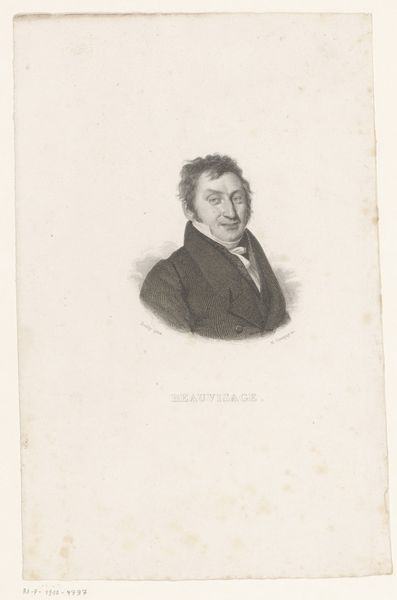
print, engraving
#
portrait
#
pencil drawn
#
neoclacissism
# print
#
pencil sketch
#
old engraving style
#
pencil drawing
#
pencil work
#
history-painting
#
academic-art
#
engraving
Dimensions: height 132 mm, width 109 mm
Copyright: Rijks Museum: Open Domain
Curator: This is a 19th-century engraving titled "Portret van Friedrich von Schiller" by G. Metzeroth. The medium, a print, employs fine lines to depict the writer. What are your initial thoughts? Editor: The mood strikes me as quite somber, perhaps even a little severe. The tonal range is minimal; the lines seem painstakingly etched. Curator: Indeed. Look at the precision used to capture Schiller's profile. Note the classical, almost sculptural quality to his features. It’s exemplary of Neoclassical aesthetics. Editor: The fineness of those etched lines, though… someone spent an immense amount of time transferring that image to the printing plate. How many impressions could they pull before the plate degraded? The economics of this kind of print production are also fascinating. Curator: From a formal standpoint, observe the deliberate arrangement of light and shadow that models his face, giving it depth and a certain psychological weight. The focus on line creates a sense of order and control, very characteristic of the period. Editor: But is that order purely aesthetic, or does it mirror something about Schiller's societal position, the patronage system perhaps? I find myself thinking about the material conditions that enabled this print to be produced and disseminated. The availability of paper, the engraver’s skill…it's a confluence of labor. Curator: Those are pertinent avenues for reflection, but don’t let them overshadow the artistic success of the work. Consider the controlled energy, the careful delineation, it is a considered visual interpretation, isn't it? Editor: Absolutely, it's undoubtedly skillful. Though, I can’t help but ponder who this print was for, what its intended audience would have read into the way Schiller is rendered here and how it participated within consumer society? Curator: Ultimately, it speaks volumes, through a careful structure, of the period's fascination with form and order and the aesthetic possibilities of Neoclassicism. Editor: A great piece, indeed! I was captured by what this material artifact and its consumption reveals about the cultural history of print and its relation to its contemporary economy.
Comments
No comments
Be the first to comment and join the conversation on the ultimate creative platform.
